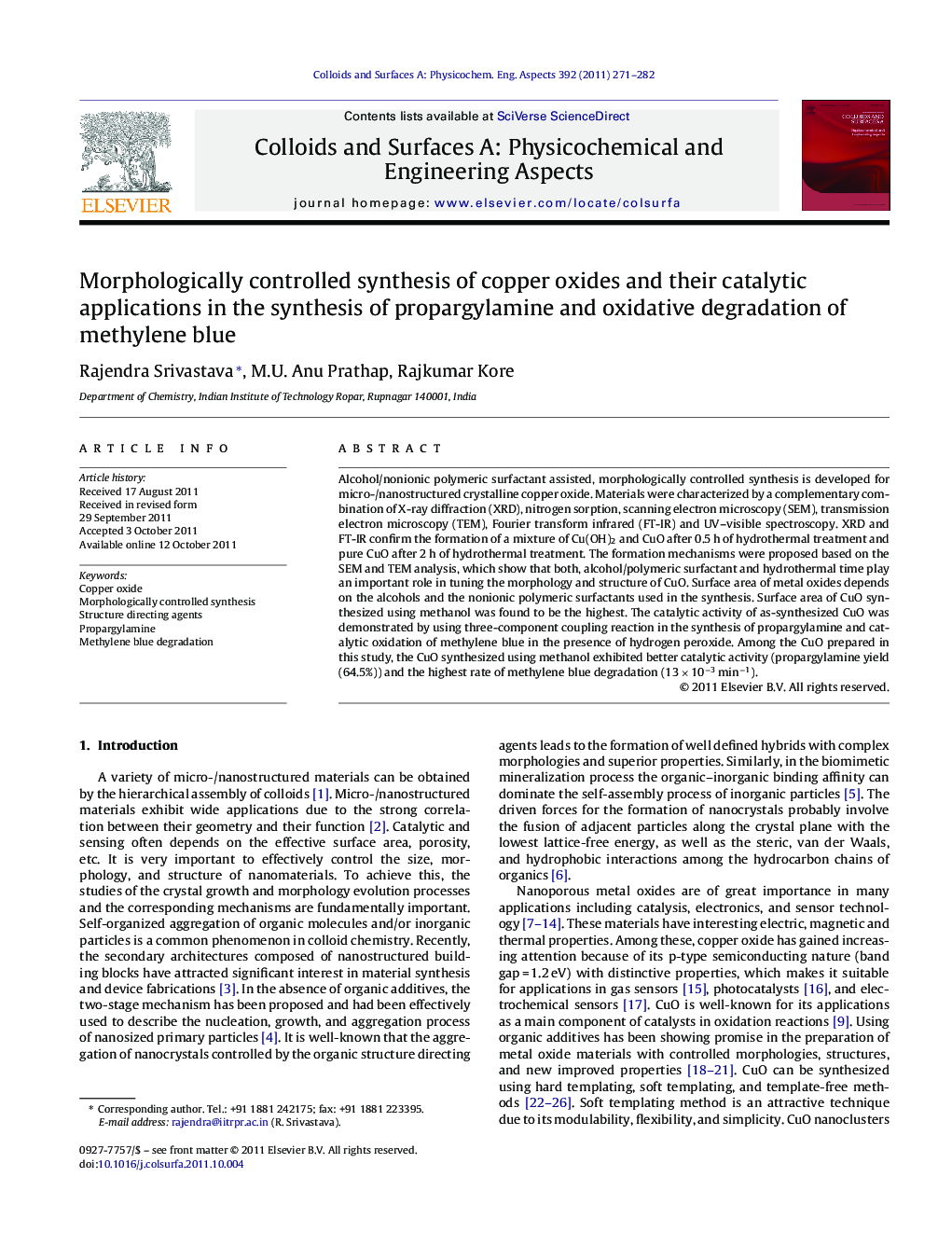| کد مقاله | کد نشریه | سال انتشار | مقاله انگلیسی | نسخه تمام متن |
|---|---|---|---|---|
| 594403 | 879449 | 2011 | 12 صفحه PDF | دانلود رایگان |

Alcohol/nonionic polymeric surfactant assisted, morphologically controlled synthesis is developed for micro-/nanostructured crystalline copper oxide. Materials were characterized by a complementary combination of X-ray diffraction (XRD), nitrogen sorption, scanning electron microscopy (SEM), transmission electron microscopy (TEM), Fourier transform infrared (FT-IR) and UV–visible spectroscopy. XRD and FT-IR confirm the formation of a mixture of Cu(OH)2 and CuO after 0.5 h of hydrothermal treatment and pure CuO after 2 h of hydrothermal treatment. The formation mechanisms were proposed based on the SEM and TEM analysis, which show that both, alcohol/polymeric surfactant and hydrothermal time play an important role in tuning the morphology and structure of CuO. Surface area of metal oxides depends on the alcohols and the nonionic polymeric surfactants used in the synthesis. Surface area of CuO synthesized using methanol was found to be the highest. The catalytic activity of as-synthesized CuO was demonstrated by using three-component coupling reaction in the synthesis of propargylamine and catalytic oxidation of methylene blue in the presence of hydrogen peroxide. Among the CuO prepared in this study, the CuO synthesized using methanol exhibited better catalytic activity (propargylamine yield (64.5%)) and the highest rate of methylene blue degradation (13 × 10−3 min−1).
Figure optionsDownload as PowerPoint slideHighlights
► Morphologically controlled synthesis of copper oxides has been developed.
► Alcohols/ethylene glycol/nonionic polymers assisted synthesis was developed.
► Alcohols/ethylene glycol/nonionic polymers tailor the properties of CuO.
► Hydrogen bonding, hydrophobic/hydrophilic interactions plays key role in synthesis.
► CuO with higher surface area is more active than that of lower surface area.
Journal: Colloids and Surfaces A: Physicochemical and Engineering Aspects - Volume 392, Issue 1, 5 December 2011, Pages 271–282